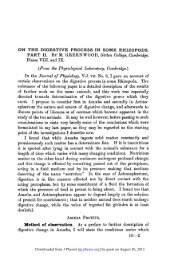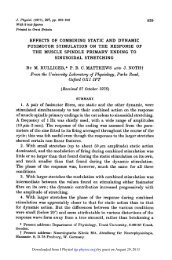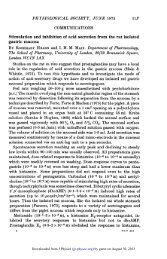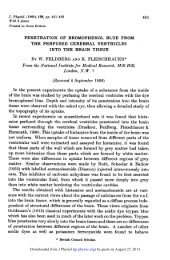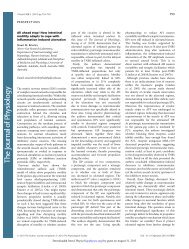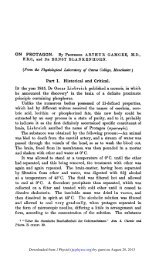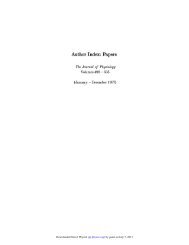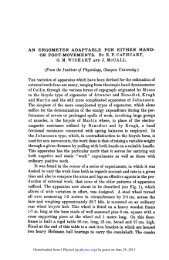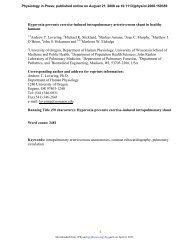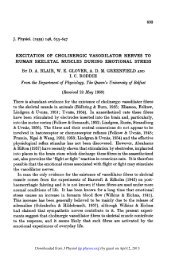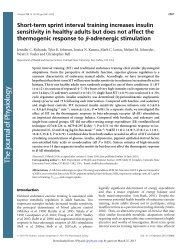MILTON AND SABINE WENDLANDT
MILTON AND SABINE WENDLANDT
MILTON AND SABINE WENDLANDT
You also want an ePaper? Increase the reach of your titles
YUMPU automatically turns print PDFs into web optimized ePapers that Google loves.
330 A. S. <strong>MILTON</strong> <strong>AND</strong> S. WENDL<strong>AND</strong>T<br />
tion of 0*2-10 ,tg PGE1 whether this antipyretic drug was given before or<br />
after PGE1. In fact, the hyperthermias induced by PGE1 appeared to be<br />
accentuated. For instance, in the experiment of Fig. 2, 4-Ac was injected<br />
30 min before the intraventricular injection of 10 jug PGE1 which produced<br />
a particularly large rise of 30 C. On the other hand the prolonged<br />
U0<br />
I-<br />
0<br />
41<br />
40<br />
Q. 39<br />
SE<br />
u<br />
'4J<br />
9C)<br />
38<br />
37<br />
0 5<br />
Hours<br />
10<br />
Fig. 2. Temperature record of an unanaesthetized cat. At the first arrow<br />
marked 4-Ac, 50 mg/kg was injected i.P. and at the arrow marked PGE1,<br />
10 #ag PGE1 was injected into the third ventricle (same experiment as given<br />
on third line from bottom in Table 1).<br />
secondary rise observed sometimes after an injection of PGE1 was<br />
abolished by the 4-Ac injection, the temperature began to fall after a<br />
latency of about 15 min and fell even below the level recorded before the<br />
PGE1 injection. Normal temperature was either not affected by an i.P.<br />
injection of 4-Ac, 50 mg/kg, or it fell by not more than half a degree.<br />
The accentuation of the immediate and the abolition of the late hyperthermias<br />
were due to the 4-Ac and not to the solvent because these



